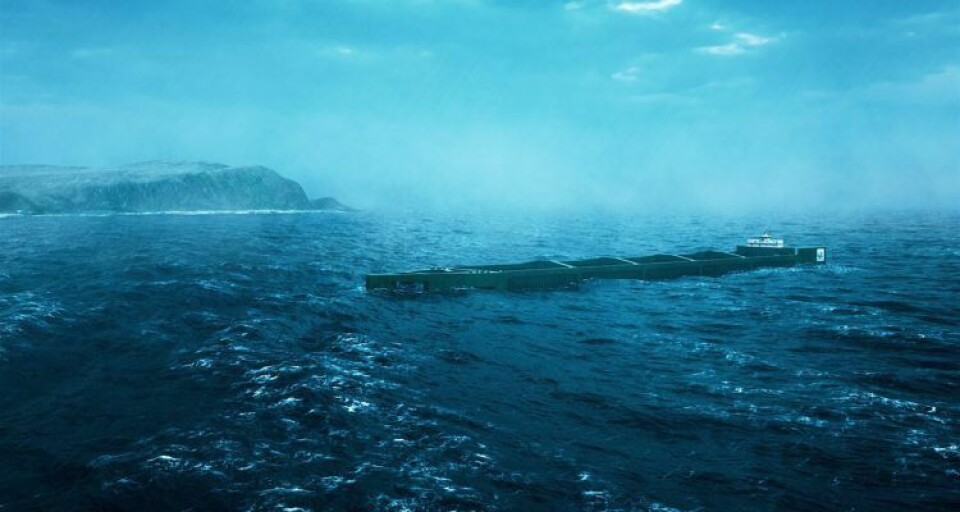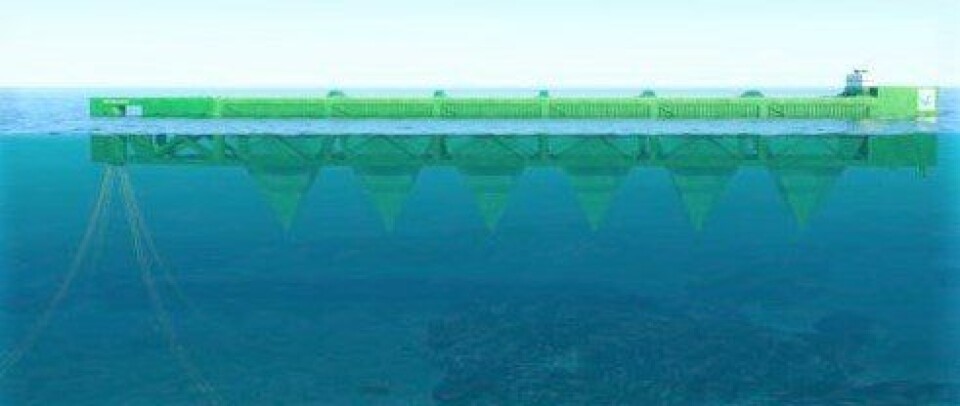
Keeping salmon ship-shape at sea
An offshore farm concept has been drawn up with fish health as a priority to ensure salmon thrive in rough conditions, its designers have said.
The ship-shaped Havfarm, by Nordlaks and NSK Ship Design, is one of many concepts drawn up as Norwegian fish farmers chase precious development licences, currently the only way to get permission to grow more fish in the country.
“Havfarm is our solution on how the aquaculture industry can develop in a sustainable manner,” said Bjarne Johansen, who is both a fish health biologist and a project manager for Havfarm. “We cannot continue to fill up with facilities in areas that are currently already used for aquaculture, so our goal is to make use of new sea areas and at the same time come up with solutions to environmental challenges.”

Johansen said that exposed sea areas experience stronger currents and bigger waves, which can be both positive and negative. Good throughput of water supplies fish with plentiful oxygen and minimises the spread of disease. Conversely, too much environmental load caused by high energy conditions leads to poor growth and challenges with fish welfare.
Physical stresses
“Havfarm will be designed to maintain this balance. The fish must be protected from potentially dangerous physical stresses, while we must take care of the need for water replacement in quiet conditions," said Johansen.
The Havfarm has been referred to as a ship, but NSK Ship Design’s project manager Håkon Ådnanes pointed out that it has no form of self-propulsion.
“The plant has elements from semi-submersible (semi-sub), craft / jacket structures and with a turret (mooring system) similar to a simplified FPSO (Floating Production Storage and Offloading Unit),” he said. “The structure has a bow like a ship, and a closed hull down to a certain depth. This is also designed for fish welfare.”
Hull protects fish
By using a turret mooring concept taken from the offshore industry, the Havfarm can rotate around its own axis to lie at anchor. The hull protects fish from water surges when they are in the upper part of the water column, in addition to protecting against lice.
“The construction creates the largest possible internal volume, which gives the fish enough space to be able to stay where it is most beneficial in the water column,” said Ådnanes.
“We also thought a lot about safety, and designed a plant to protect both fish and humans against extreme environmental stresses. The challenge has been to find something that safeguards fish welfare at both high and low environmental loads.”

Ådnanes and Johansen acknowledged early on that environmental loads in exposed waters are too big for 100-gram smolts. They therefore want the plant to be perceived as part of a new production model, as the third stop for good adult fish. The first step is larger smolts on land, followed by a shorter stay in traditional cages.
Lice skirts
“From experience, lice are not a challenge in the first year at sea. Existing preventive measures against lice, such as lice skirts and, not least, fallowing, are believed to be sufficient when the fish are going to stay there only until 1-1.5 kg size,” they explained.
As the fish grows, it moves into a Havfarm, located at least 10 km from the nearest farms.
Nordlaks has been granted 10 development permits from the authorities, but wants another three before going ahead with the Havfarm. The licences each have a maximum biomass limit and Nordlaks would need 13 to run the farm at capacity.
One unanswered question is how the fish would relate to being kept in the Havfarm cages, which are larger than those in the fjords.
“We do not know with certainty, but from an early stage we have included various disciplines and professionals in the field of research to get input from all sides,” said Ådnanes.























































